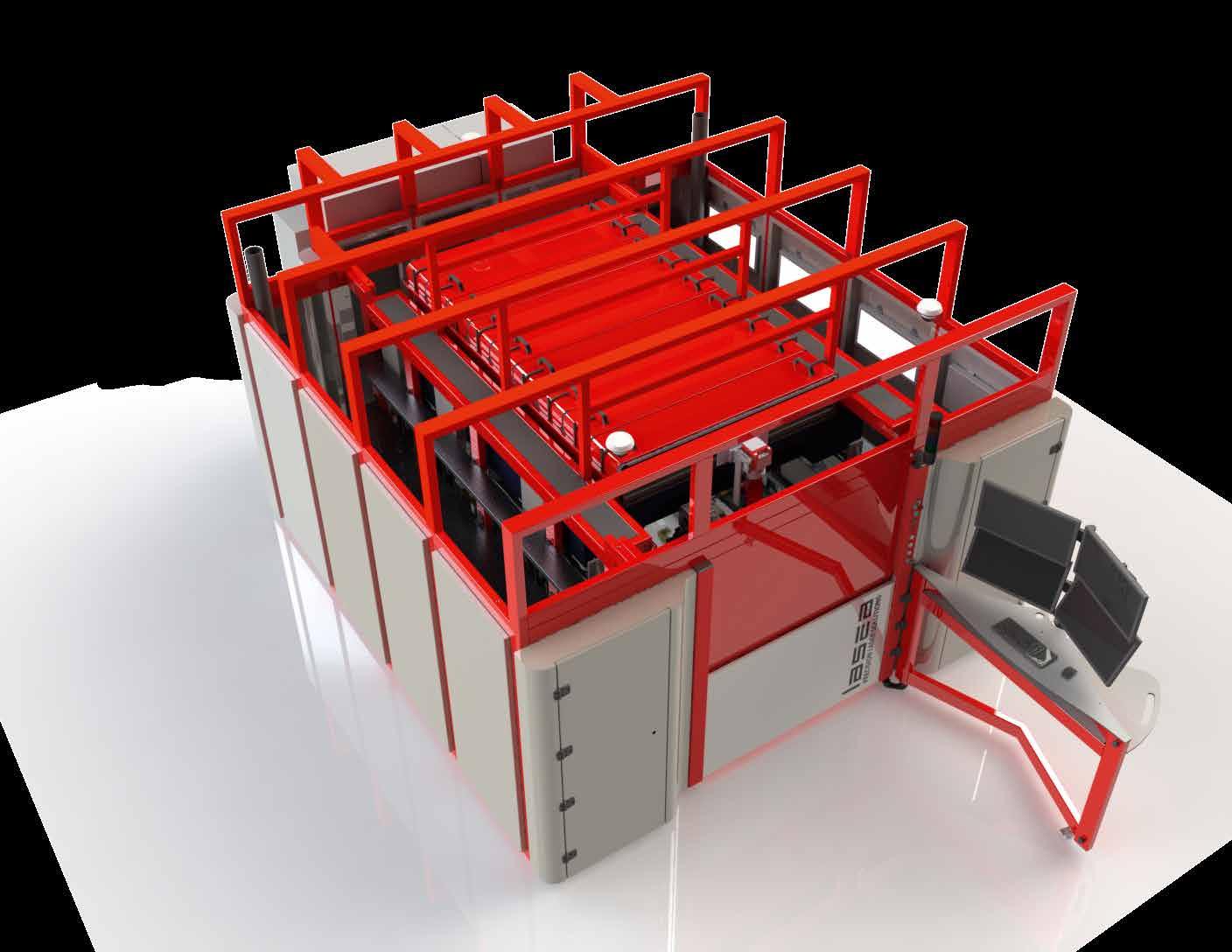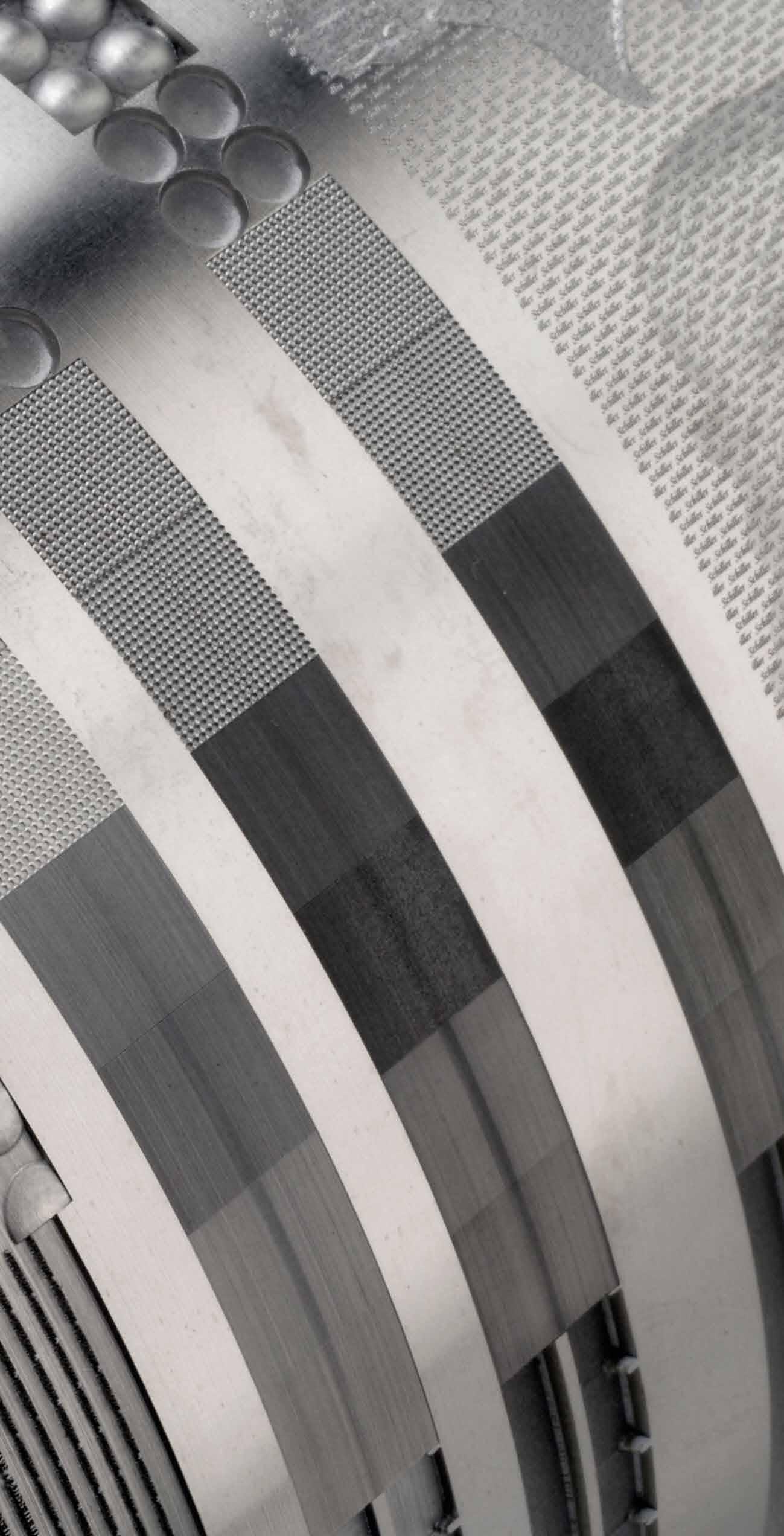
7 minute read
MultiFlex

Laser-like focus on materials processing
Ultra-short pulse laser systems are capable of ablating materials to a high level of precision, yet the long processing time means their industrial use is limited to a few applications. We spoke to Johannes Finger and Martin Reininghaus about the MultiFlex project’s work in developing a more powerful and faster laser machine that could open up new opportunities.
The majority of femtosecond lasers currently in industrial use have an average power of some tens of watts, which limits them in terms of material processing time and productivity. As the coordinator of the EUfunded MultiFlex project, Martin Reininghaus is working to develop a new, more powerful laser processing machine that will greatly improve throughput. “The novel aspect of this project is the power of this laser,” he says. Lasers with a few hundred femtoseconds (1 fs = 10-15 of a second) of pulse duration are already used for materials processing, but they’re limited to just a few applications due to productivity issues, an issue that the project is working to address. “Currently femtosecond lasers with an average power of 10-50 watts are used for materials processing. In this project, we go up to 1 kilowatt of power, so this technology can make material processing much faster,” explains Reininghaus.
Higher power
A second major challenge is to then distribute this higher average laser power onto the workpiece so that it can be used effectively for laser materials processing, while still maintaining the high quality associated with ultrashort pulsed laser radiation. Researchers are developing an optical system that essentially splits the laser beam into several beamlets, or sub-beams. “We split the beam up into 64 identical copies,” says Johannes Finger, a colleague of Reininghaus who played a major role in the project. A further aspect of the project’s research involves developing a control system and software to then control these beams individually and switch any beams on and off as required. “You basically have this array of beams which is moved over a surface structure and then adapt your multibeam beam pattern by switching on and off arbitrary beams. In this way, you can realize a highly parallelized ablation process without any limit of geometric aspects, quality or precision compared to a single beam process,” outlines Finger.
The project’s work encompasses the development of not only the laser source and the optical system, but also a machine tool. Prototypes of each of the components have been developed in MultiFlex, with researchers now looking to combine everything into one machine concept. “We are now looking at integration and interaction of all components, for example the beam quality and thermal load of optical components during operation. All these aspects will have an effect on the final performance and reliability of the machine,” says Reininghaus. Alongside testing the components individually, the consortium is also considering the challenges that may
arise when these machines are applied in an industrial environment. “Aside from some small drawbacks, everything fits together quite well and we are optimistic that we can continue our progress through the final phase of the project,” he continues. “We are basically developing a disruptive solution for industrial laser processing.”
This solution is ultimately intended for use in the commercial sector, and it will be tested and evaluated in three industrial use cases in the project. The main focus in MultiFlex is on increasing productivity, which is always a prominent consideration in industry. “We aim to set up a manufacturing machine to really upscale productivity for industrial use,” outlines Reininghaus. While currently available ultra-fast lasers can ablate materials very precisely, this is not enough in itself for the technology to be adopted more widely, as companies typically place a lot of emphasis on productivity. “Materials
processing by means of ultra short pulsed laser radiation has already penetrated many markets as it results in high surface quality. I am convinced that this is just the beginning of this digital production technology, which has the potential to be widely used in industrial applications. This laser technology can get very good results, but it’s still much too slow to be widely used in industrial applications,” explains Reininghaus.“The project aims to increase productivity, to make these
The Multiflex “High power USP laser-dot-matrix-printer.
can make material processing much faster.
Laser generated 3D-structures in ceramics or metals.


processes up to 100 times faster and so more economically viable.”
There are a variety of potential applications of this technology, including in the automotive sector, for example in manufacturing lighting elements or piston rings and in reducing the friction on certain surfaces. Improving the speed of processes would also open up further opportunities to apply ultra-short laser processing, believes Reininghaus. “There are some potential applications that we can imagine now, but which are not yet thought of as realistic. Like using ultra-fast lasers to manufacture large self-cleaning surfaces, for example for antiicing for aircraft wings and wind turbines,” he says. The productivity of existing ultra-fast lasers is currently much too low to make these applications a realistic prospect on a m2 scale, but the project’s research could bring this a step closer by making materials processing much faster. “This technology can help to make these applications more realistic,” says Finger. which would make ultrafast laser processing a more cost-effective option. The project is at a very exciting stage, with very promising results so far in terms of the effectiveness of the laser, and so researchers are beginning to look to the future and consider in which areas it could be applied. “We have now developed this technology, and of course we are thinking about where it could be used,” says Finger. Laser ablation is attracting an increasing level of attention as a potential manufacturing process, with interest from many different areas of industry. “There’s interest from different sectors like the automotive industry, the semi-conductor industry, medical applications, and consumer electronics,” says Reininghaus.


Prototypes
This research could have a wider impact on certain areas of industry, for example friction reduction could lead to dramatically reduced energy consumption in the automotive or energy sectors. However, at this stage the focus is more on improving the technology. “We have all the prototypes ready, and they will now basically all be merged into one machine,” says Reininghaus. With a lot of the groundwork now done, Reininghaus and the Multiflex consortium are now looking to make more progress over the final year of the project’s funding term. “By around the middle of next year we aim to have a finalised system here at the Fraunhofer Institute for Laser Technology (ILT), with the complete machine tool and every component integrated. We also want to have demonstrated the three industrial use cases,” he outlines.
The ambitious aim is to increase productivity by two orders of magnitude,

Laser based manufacturing of Sapphire gears.
Making ultrafast lasers faster Project Objectives
The MultiFlex aims at developing a high power “USP laser-dot-matrix-printer”, which consists of a newly developed high power ultrashort pulsed laser and a flexible multi beam optics concept for laser materials processing. The high power laser beam is split into a matrix of 64 multi-beams. By enabling the flexible switching of the separated single beams and a control system for compensating field distortions, arbitrary surface structures can be generated with highest precision and throughput.
Project Funding
This project receives funding from the European Union’s Horizon 2020 research and innovation program under grant agreement No 825201.
Project Partners
This project has a total of 6 Partners from 3 different Countries. • https://multiflex-project.eu/consortium/ • http://www.aaoptoelectronic.com/ • https://amplitude-laser.com/ • https://www.tos.rwth-aachen.de/ • https://www.ilt.fraunhofer.de/ • https://www.lasea.eu/en/
Contact Details
Project Coordinator, Martin Reininghaus Fraunhofer Institute for Laser Technology ILT Steinbachstr. 15 52074 Aachen T: +49 241 8906 627 E: martin.reininghaus@ilt.fraunhofer.de W: https://multiflex-project.eu

Martin Reininghaus
Martin Reininghaus is group manager for micro- & nanostructuring at Fraunhofer ILT. His group conducts research and development activities concentrate on laser material processing by means of ultrashort pulsed laser radiation. The activities cover the entire chain from fundamental research on lightmaterials interaction to process development, prototype machine constructions and systems engineering. In 2020, his team awarded the German Stifterverband prize for multibeam laser processing.


